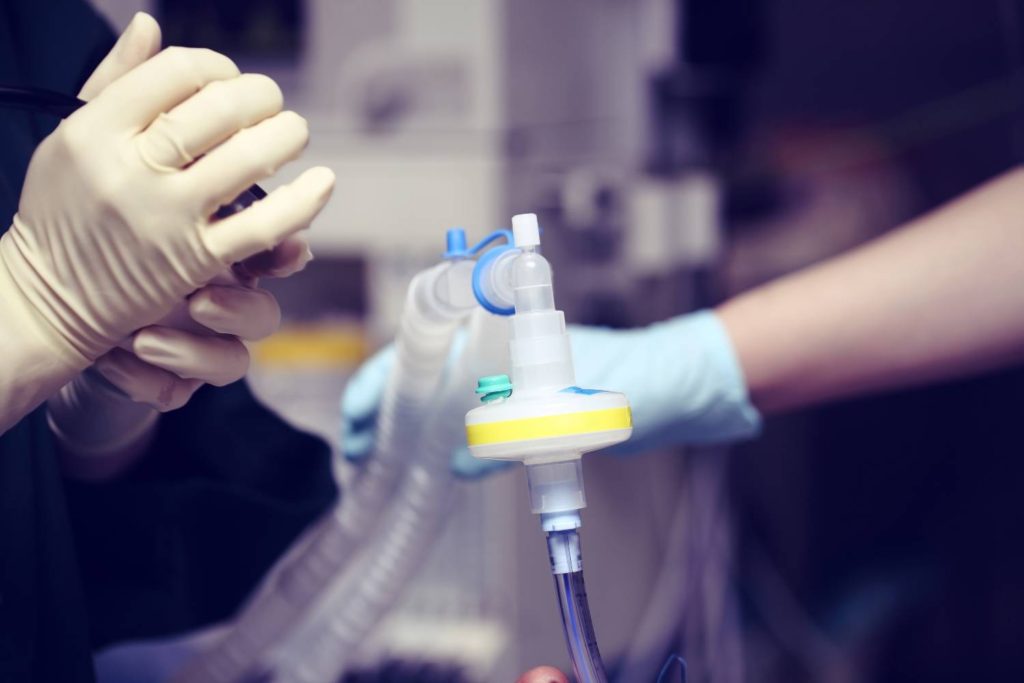Closed-loop systems, in which anesthesiologists set an automatically maintained target during procedures, offer several advantages. These systems permit greater precision in achieving targeted outcomes, reduce the chance of human error, and free the anesthesiologist to focus on higher-level tasks. However, in order to ensure safety and effectiveness, it is necessary for anesthesiologists using closed-loop systems to thoroughly understand the system in use and to determine an accurate input signal [1]. American regulatory bodies tend to strictly regulate closed-loop systems, and in order to gain approval, these systems likely need to be designed in collaboration with engineers and with stringent safety measures [2].
Closed-loop systems have been shown to work well at maintaining target outcomes in anesthesia patients. In a two-phase study by West et al., adults receiving elective surgery were administered remifentanil with an open-loop system in phase I or with automatic titration in phase II. Closed-loop control of remifentanil was shown to improve controller performance [3]. Puri et. al. divided adult patients into randomized groups, half receiving manual infusions of propofol, half receiving closed-loop infusions. Patients in the closed-loop groups remained within ±10 units of target bispectral index, a measure of depth of anesthesia, for significantly longer than those in manual groups. Meanwhile, the global performance in the manual titration groups was lower than in the closed-loop groups [4] . Finally, Pasin et. al. found that closed-loop systems were less likely to over- or under-shoot target anesthesia depth [5].
These statistically significant differences in reaching and maintaining targets are consistent, but some have questioned the relevance of these findings to patient well-being [6]. Others have suggested that closed-loop methods might lessen cognitive aftereffects of anesthesia. In one study, 90 patients undergoing noncardiac surgeries were randomly split into manual and closed-loop groups, which were managed by three independent controllers. Patients completed the Montreal Cognitive Assessment both preoperatively and one week postoperatively, as well as a set of other neurocognitive assessments at regular intervals after surgery. Results showed a significant difference in cognitive scores between the closed-loop and manual groups, both one week and three months after surgery. However, neurocognitive tests showed no significant difference, and the study’s design rendered it difficult to determine how each individual controller affected patient cognitive recovery [7]. The study concluded that additional research is needed on the topic of cognitive aftereffects and closed-loop systems.
Kuck et. al., in reviewing available data, conclude that closed-loop systems should only be used to supplement anesthesiologists—as opposed to some mainstream media outlets, who have suggested that they might compensate for a lack of physicians in war zones and other areas with high need [8,9]. The study authors a set of requirements that any closed-loop system should meet, among them transparency and regulatory approval. The latter is likely to pose a challenge to the widespread adoption of closed-loop systems in the U.S., since the FDA has historically been wary of them, approving a closed-loop artificial pancreas only in 2019 [10].
In general, closed-loop systems appear effective at reaching and maintaining target levels of anesthesia depth, BIS, and other measures. At the same time, their advantage to patients and doctors alike remains more ambiguous: studies of patient recovery, including cognitive recovery, show few significant differences between those treated with closed-loop and open-loop systems. However, provided these systems have neutral-to-positive effects on patient outcomes, their capacity to ease physician task-load may prove valuable.
References
[1] Miller, Timothy E., and Tong J. Gan. “Closed-Loop Systems in Anesthesia.” Anesthesia & Analgesia, vol. 117, no. 5, 2013, pp. 1039–1041. doi:10.1213/ane.0b013e3182a5d689.
[2] Dumont, Guy A., and J. Mark Ansermino. “Closed-Loop Control of Anesthesia.” Anesthesia & Analgesia, vol. 117, no. 5, 2013, pp. 1130–1138. doi:10.1213/ane.0b013e3182973687.
[3] West, Nicholas, et al. “Design and Evaluation of a Closed-Loop Anesthesia System With Robust Control and Safety System.” Anesthesia & Analgesia, vol. 127, no. 4, 2018, pp. 883–894. doi:10.1213/ane.0000000000002663.
[4] Puri, Goverdhan D., et al. “A Multicenter Evaluation of a Closed-Loop Anesthesia Delivery System.” Anesthesia & Analgesia, vol. 122, no. 1, 2016, pp. 106–114. doi:10.1213/ane.0000000000000769.
[5] Pasin, Laura, et al. “Closed-Loop Delivery Systems Versus Manually Controlled Administration of Total IV Anesthesia.” Anesthesia & Analgesia, vol. 124, no. 2, 2017, pp. 456–464. doi:10.1213/ane.0000000000001394.
[6] Bansal, Vikram K., and Douglas L. Hester. “Closed-Loop Anesthesia.” Anesthesia & Analgesia, vol. 125, no. 1, 2017, pp. 360–361. doi:10.1213/ane.0000000000002181.
[7] Joosten, Alexandre, et al. “Anesthetic Management Using Multiple Closed-Loop Systems and Delayed Neurocognitive Recovery.” Anesthesiology, vol. 132, no. 2, 2020, pp. 253–266. doi:10.1097/aln.0000000000003014.
[8] Kuck, Kai, and Ken B. Johnson. “The Three Laws of Autonomous and Closed-Loop Systems in Anesthesia.” Anesthesia & Analgesia, vol. 124, no. 2, 2017, pp. 377–380. doi:10.1213/ane.0000000000001602.
[9] Frankel, Todd. “’We Are Convinced the Machine Can Do Better than Human Anesthesiologists’.” The Washington Post, WP Company, 15 May 2015, www.washingtonpost.com/news/the-switch/wp/2015/05/15/one-anesthesiology-robot-dips-its-toes-into-whats-possible-this-one-jumps-all-in.
[10] Hale, Conor. “FDA Approves Tandem’s Closed-Loop Artificial Pancreas to Automatically Control Insulin Doses.” FierceBiotech, 16 Dec. 2019, www.fiercebiotech.com/medtech/fda-approves-tandem-s-closed-loop-artificial-pancreas-to-automatically-control-insulin.
